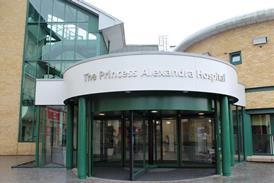David Hare explores the lessons the NHS needs to retain from the last 10 year plan as it embarks on the new
Plans by definition are about the future, and about change and difference. But why do so many plans, including those in the NHS, too often disregard the past and resort to a “Year Zero” approach where the often hard won lessons from previous plans are forgotten?
In association with
“Progress, far from consisting in change, depends on retentiveness”, said George Santayana. So, what should we retain in our collective memory as we embark on this new 10 year plan?
We should start with the lessons of the last NHS 10 year plan from as far back as 2000. It tells us that success depends on a clear vision, widespread engagement and support, and an honest approach to improvement.
Simply titled “The NHS Plan”, its core themes are remarkably similar to the current challenges the NHS is facing – a need to improve access and reduce waiting times for patients, significantly expand the NHS workforce, reduce unacceptable variation in care, join up health and care services and reduce health inequalities.
And in another echo of the current debate around the future of the NHS, the plan emphasises a two pronged approach of an increase in funding, backed up by “radical reform”.
And while in some ways the policy and financial environment of the early 2000s seems a long way from today, there’s much to be learned from the plan and how it delivered for NHS patients.
Clear vision
The NHS Plan of 2000 was clear, with a simple vision underpinning it – to build a health service designed around the patient. Of course, all health reforms are ultimately about improving care for patients, but the current alphabet spaghetti of ACOs, ICSs, STPs, MCPs and so on means little to patients and taxpayers.
This matters – we need a 10 year plan that can command the support of the taxpaying public and the first step to achieving that is clear expression.
Having this clear vision at the heart of the 2000 plan made it easy to bring people along with it. Clearly, a great deal of work went into garnering support for the plan, with two full pages filled with the signatures of 25 prominent leaders in the health world – Royal Medical Colleges, trade unions, patient charities as well as the Local Government Association – who all publicly signed up to the principles of the NHS plan.
We need a 10 year plan that can command the support of the taxpaying public and the first step to achieving that is clear expression
Reforming something as treasured (and unwieldy) as the NHS is always going to be contentious and will never please everyone. But getting the competing voices within the health sector behind you is invaluable and makes it significantly easier to deliver and achieve your vision.
The 2000 NHS plan was also an honest plan. It didn’t pull any punches about the need for the service to “move from a culture where it bails out failure to one where it rewards success”, and from a situation where patients are “talked at rather than listened to”.
Independent sector
But perhaps even more bravely, the 2000 plan makes a clear and pragmatic case for how the independent sector can support in delivery.
By clearly stating from the outset an unstinting commitment to universal, free at the point of use healthcare, the plan makes clear that “ideological boundaries” should not stand in the way of better care for NHS patients, with the new “concordat” between the NHS and independent sector enabling a longer term, more structured partnership.
This allowed independent sector capital, capacity and capability to be used for the benefit of NHS patients, bringing vital investment and helping dramatically improve access to key NHS services.
Sadly, this clarity has all but disappeared from the debate about the role of the independent sector in the NHS and there is a continuing need to bust myths that should have been dispelled years ago, such as the alleged “premium rates” paid to private hospitals to help support the NHS over winter, largely banished in the era of the NHS tariff.
The fact that workforce gaps, joining up health and social care services, and cutting waiting times are once again on the NHS’ to do list suggests if any progress has been made, it hasn’t kept up with current pressures
No one is saying that the last 10 year plan was perfect; indeed the fact that workforce gaps, joining up health and social care services, and cutting waiting times are once again on the NHS’ to do list suggests if any progress has been made, it hasn’t kept up with current pressures.
But it was clear sighted, inclusive and did not duck the difficult choices, and the 2018 10 year plan must adopt the same principles, focusing only on what is best for the people that fund and use the service.
The truth is that a forward looking 10 year plan must learn the lessons of the past just as much as it anticipates the needs of the future. As Santayana also said, “Those who cannot remember the past are condemned to repeat it”.
































3 Readers' comments